Meibomian Gland Dysfunction
About eye infections Eyelid inflammation Conjunctivitis Meibomian gland dysfunction
The tear film covering the white surface of our eyes is the first line of protection for the delicate tissues of the eye. The meibomian glands along the upper and lower eyelids supply the thin oily layer of meibum to the tear film on the surface of the eye and help slow its evaporation. Chronic difficulties with dry eye syndrome, blepharitis, or other eyelid-related conditions are underlaid by continued meibomian gland dysfunction.
Vitamins
& Supplements
Not sure which to get?For help call us at 845.475.4158
Complete Product List
Essential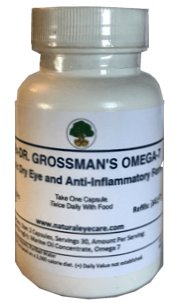 Dr. Grossman's Omega-7 Plus Mucin Complex Dr. Grossman's Omega-7 Plus Mucin ComplexOmega-7 Fish Oil: dry eyes and inflammation symptoms |
Essential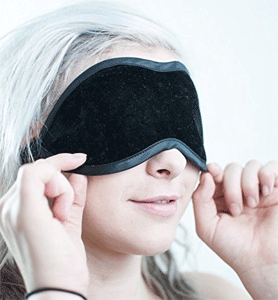 Eye Doctor Plus Reusable Moist Heat Compress Treatment Pack Eye Doctor Plus Reusable Moist Heat Compress Treatment PackRelief for dry, sore, tired and gritty eyes with optimum temperature effective treatment. |
Essential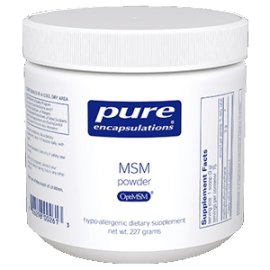 MSM (organic) Powder 227 gms MSM (organic) Powder 227 gmsMSM helps maintain healthy tissues, nails, hair and skin, and has natural anti-inflammatory properties. |
Very Important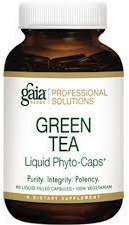 Green Tea 60 lvcaps Green Tea 60 lvcapsConcentrated extract of green tea. |
Conventional Treatment
Eye doctors have several approaches to help clear up meibomian gland dysfunction.
Meibomian gland probing is a simple technique to open gland openings and the main duct of your meibomian glands. The doctor uses anesthetic eye drops to de-sensitize the nerves in your cornea and then probes and dilates the openings of the meibomian glands. Several pilot studies have evaluated the success of this procedure. 76% to 96% of patients had immediate relief, and all patients experienced relief within one month. Some patients received both the technique and corticosteroid eye drops which were more effective than eye drops alone.
In some cases antibacterial eye drops may be recommended, such as if the problem is caused by anterior blepharitis due to a staph infection. Cyclosporine eye drops, which modify the body's immune response, may be recommended for some types of blockages.
Complementary Approach
Although patients with meibomian gland dysfunction report success with the commonly prescribed corticosteroid eye drops, these kinds of solutions do not address the underlying cause and it may recur again and again. Additionally, such eye drops damage other parts of the eye and vision process.
For example, bacteria, dandruff, and fungi are commonly thought to be causes of posterior blepharitis. But what may be more important is that the presence of these toxins that change the healthy environment of the eyelid and produce pro-inflammatory cytokines, toxins, and free radicals.
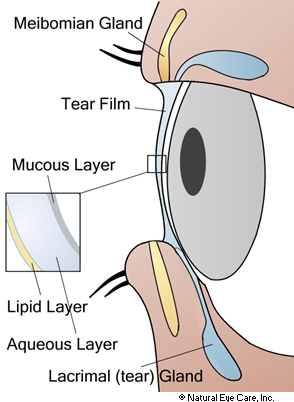
Researchers have noted that some nutrients may be helpful.
Sea buckthorn oil. This special oil, from the berries of a cold weather shrub, contains helpful oils as well as a special essential fatty acid called omega-7. This little-known nutrient is extremely helpful at fortifying tears and saliva and improving lubrication throughout the body. Carotenoids and tocopherols in the oil, or eicosanoids produced from the fatty acids of the oil may have a positive effect on inflammation and differentiation of the meibomian gland cells.7 It also can provide protection to the bowel and alleviate vaginal dryness.
Omega-3 fatty acids. In a study of 439 postmenopausal women, reseachers found that high omega-3 consumption and moderate omega-6 consumption was protective against meibomian gland dysfunction.1 An earlier study2 found that these fatty acids influenced the quality and quantity of intracellular lipids, and had a direct effect on the meibomian gland epithelial cells.
Green tea extract. The polyphenols in green tea have been shown to improve meibomian gland function.3 Green tea epicatechin's antioxidant capacity fights free radicals caused by chronic inflammation.4, 5, 6
Castor oil eyedrops (formulated and approved for use in the eye). One study found that these eyedrops help maintain eye lubrication by improving tear stability, preventing tear evaporation, and supporting meibomian gland function.8 It may have natural anti-inflammatory and healing properties as well. You can also use a clean cotton swab, to apply castor oil along the lid of the eye. This helps reduce inflammation and supports healing.
Daily compresses may be helpful for a chalazion or blepharitis but may not be effective for meibomian dysfunction. Nonetheless, here is a procedure which will improve circulation, which in turn may help in unblocking the gland.
- Place a warm, clean washcloth for 5–10 minutes over the eyelid, 2–4 times a day.
- Herbs that can help as part of the compress include burdock, chamomile, chrysanthemum flower, eyebright, echinacea angustifolia, forsythia, golden seal, honeysuckle, marigold, and red raspberry leaf.
Lid cleanser. Apply a lid cleanser each day to keep the eyelids clean. Using baby shampoo is one option, or use castor oil as described above.
Eyedrops. Apply daily to keep the eye moist, preferably use only preservative-free eyedrops.
These may be helpful as well:
Hydrating mask, such as Bruder Eye Hydrating Mask. This helps with moisturizing the eyes and unblocking the meibomian gland.
Herbal formulas such as Jason's ImmunoBalance Formula help boost your immune system.
Therapeutic devices. The MiBoFlo Thermoflo is a therapeutic device providing an alternative therapy for dry eyes. It uses a proprietary thermoelectric heat pump to help maximize liquefaction of meibum, thus improving the preservation and function of the evaporative component of the tear film. This therapy is aimed at improving function of the meibum component of the tear film. LipiFlow thermal pulsation system applies warmth to the eyelids to melt waxy deposits in the meibomian glands and apply pulsed pressure to the eyelid to open and thoroughly express the contents of the glands. It is applied in the doctor's office in 12-minute treatment sessions.
Footnotes
1. Ziemanski, J.F., Wolters, L.R., Jones-Jordan, L., Nichols, J.J., Nichols, K.K. (2018). Relation between dietary essential fatty acid intake and dry eye disease and Meibomian gland dysfunction in postmenopausal women. Am J Ophthalmol, May;189-20-40.
2. Liu, Y., Kam, W.R., Sullivan, D.A. (2016). Influence of omega 3 and 6 fatty acids on human Meibomian gland epithelial cells. Aug;35(8):1122-6.
3. Nejabat, M., Reza, S.A., Zadmehr, M., Yasemi, M., Sobhani, Z. (2017). Efficacy of Green Tea Extract for Treatment of Dry Eye and Meibomian Gland Dysfunction; A Double-blind Randomized Controlled Clinical Trial Study. J Clin Diagn Res, Feb;11(2):NC05-NC08.
4. Chen, L., Yang, X., Jiao, H., Zhao, B. (2003). Tea catechins protect against lead-induced ROS formation, mitochondrial dysfunction, and calcium dysregulation in PC12 cells. Chem Res Toxicol, Sep;16(9):1155-61.
5. Kondo, K., Kurihara, M., Miyata, N., Suzuki, T., Toyoda, M. (1999). Mechanistic studies of catechins as antioxidants against radical oxidation. Arch Biochem Biophys, Feb 1;362(1):79-86.
6. Caturla, N., Vera-Samper, E., Villalaín, J., Mateo, C.R., Micol, V. (2003). The relationship between the antioxidant and the antibacterial properties of galloylated catechins and the structure of phospholipid model membranes. Free Radic Biol Med, Mar 15;34(6):648-62.
7. Järvinen, R.L., Larmo, P.S., Setälä, N.L., Yang, B., Engblom, J.R., et al. (2011). Effects of oral sea buckthorn oil on tear film Fatty acids in individuals with dry eye. Cornea, 2011 Sep;30(9):1013-9.
8. Goto, E., Shimazaki, J., Monden, Y., Takano, Y., Yagi, Y., et al. (2002). Low-concentration homogenized castor oil eye drops for non-inflamed obstructive meibomian gland dysfunction. Ophthalmology, Nov;109(11):2030-5.
 info@naturaleyecare.com
info@naturaleyecare.com



 Home
Home



 Vision
Vision Vision
Vision



 Health
Health Health
Health Research/Services
Research/Services Pets
Pets About/Contact
About/Contact


